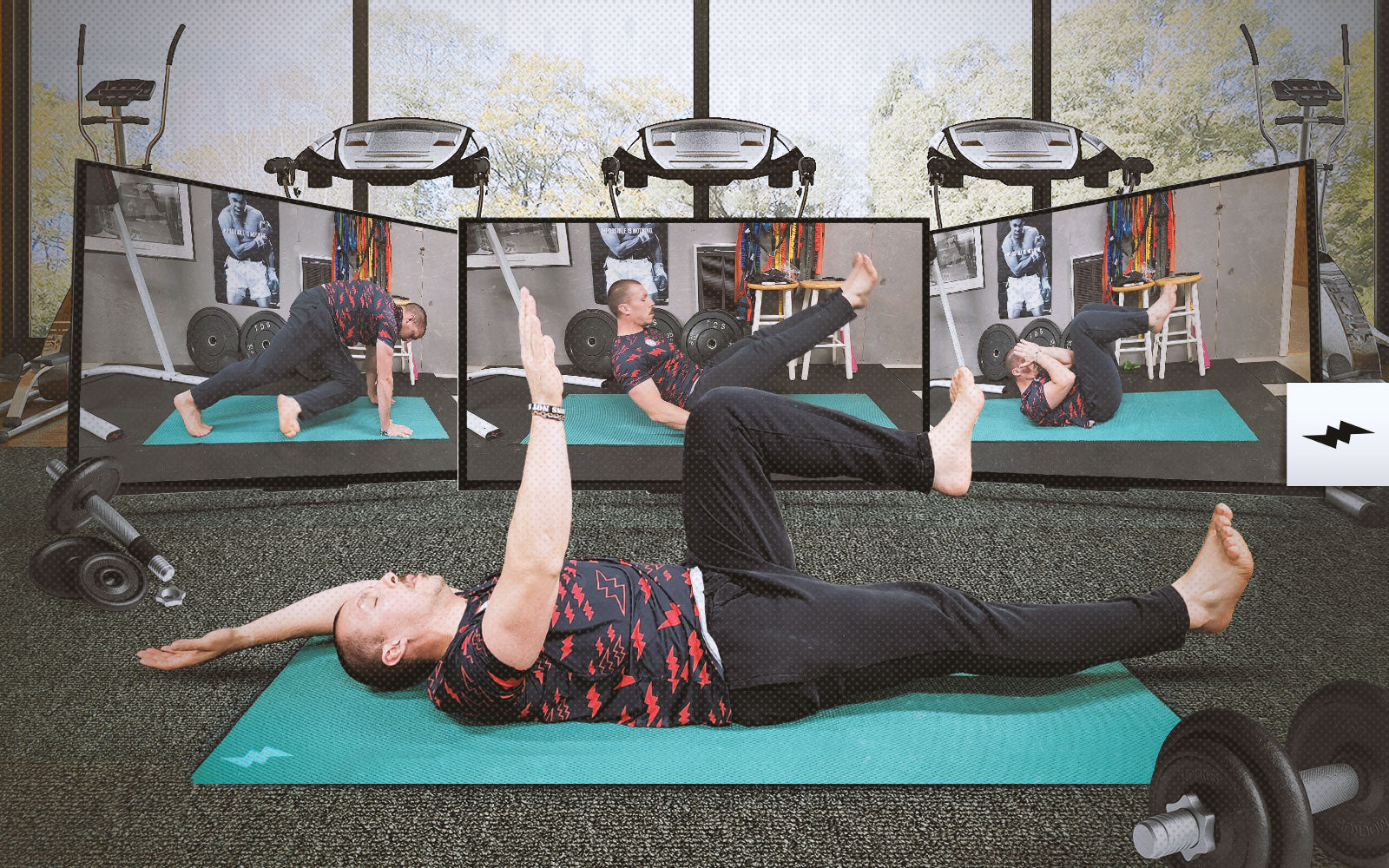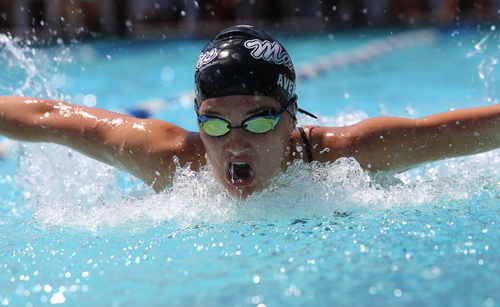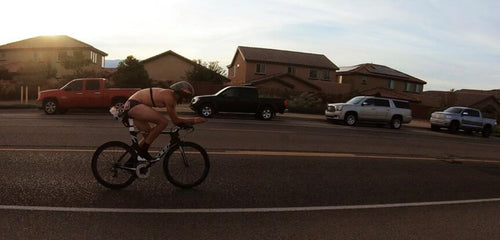15-Minute Ab Workout

I think it is fair to say that there is nobody out there that doesn’t want to have a 6-pack. A washboard stomach, be it on a woman or man, is the ultimate sign that you are in peak physical condition. However, a ripped midriff is not purely aesthetic; for endurance athletes, a strong core is key to maintaining good technique and staying injury free.
Strengthening your core is important for endurance athletes in order to maintain good form throughout the event. This holds true for runners, swimmers and cyclists because efficiency of movement is key across all disciplines. A strong core reduces unnecessary movements which waste energy.
Which Muscles Make Up Your ‘Core’?
When we talk about ‘ab’ workouts, we are really talking about the entire core of your body; all the muscles that contribute to you being able to stabilize your torso. This includes the rectus abdominis (your abs) abs, but also the transversus abdominis which acts as a weight belt wrapping around under your abs, and obliques which act as side stabilizers. You want to be hitting all of these areas in order to effectively train your core, not just bang out as many crunches as you can.
How Often Should I Train My Core?
The good news is that you do not need to become a gym bunny all of a sudden. Training your core uses the same principles as any other kind of strength training. One 15-minute session, two or three times per week is enough to see gains in strength. The key is to make sure you are varying your training and including resistance if the exercises become too easy. If you can complete more than 12-15 reps with good form then it is time to look at mixing things up.
The Workout
Here is your 15-minute workout that is going to hit your core from all angles. Be sure to mix things up and move onto the advanced variations when things become too easy.
Muscle Group Targeted: Rectus Abdominis

Basic Exercise 1: Reach And Tuck
From a plank position raise your left leg off the ground and then reach your right hand out in front of you, balancing only on your right foot and left hand. Breath in as your reach forward, and focus on a slow, controlled movement. As you exhale, squeeze your left knee in under your body and bring your right elbow in to touch your knee.
Aim for 15 reps on each side with perfect technique before progressing to the advanced variation.
Advanced Variation:
Once you can easily do 15 reps, push yourself by grabbing a dumbbell (or bag of sugar if you are at home) and hold that in your hand as you complete the exercise. This will force you to work harder to maintain your balance.
Basic Exercise 2: V-Ups

Lay on your back with arms stretched above your head and simultaneously raise your legs and arms to form a ‘V’ shape. Lower with control. Aim to touch your toes with your hands, and to keep everything as straight as possible.
Aim for 15 reps with perfect technique before progressing to the advanced variation.
Advanced Variation:
Once you can easily do 15 reps, grab a small weight (or that handy bag of sugar) and do the exercise while holding the weight.
Muscle Group Targeted: Transversus Abdominis
Basic Exercise 1: Double Leg Lower And Lift
Lay on your back with your arms by your side and legs extended. Engage your core and lift your legs up until your feet are over your head. Lower with control. The key to this exercise is to make sure that your lower back is glued to the floor at all times. If you start to arch your back then that is poor form and the rep doesn’t count.
Aim for 15 reps with perfect technique before progressing to the advanced variation.
Advanced Variation:
Once you can easily do 15 reps, add a light dumbbell between your ankles. Just be sure to squeeze tightly so it doesn’t fall during the exercise and injure you.
Basic Exercise 2: Dead Bugs
Lay on your back with your arms extended straight above you. Engage your core and lift your legs to a 90-degree bent position (yes, you will look like a dead bug!). Extend one leg out straight and pause for a moment without letting your heel touch the floor. Bring your leg back to the original position and repeat on the other side. Once again, if you start to arch your back then that is poor form and the rep doesn’t count.
Aim for 15 reps on each side with perfect technique before progressing to the advanced variation.
Advanced Variation:
Once you can easily do 15 reps on each side, try the exercise by extending both legs and your hands at the same time, before coming back to the start position.
Muscle Group Targeted: Obliques
Basic Exercise 1: Russian Twist
From a seated position, bring your knees up with your heels touching the floor. Hold onto the back of your hamstrings for stability as you engage your core. Clasp your hands in front of you and twist slowly to one side until your hands touch the floor beside you. Slowly bring it through centre, with control, and then continue through to the other side and bring it back to centre. This is one rep.
The key to this exercise is to do it very slowly, with control. Pause at the bottom to get the most out of it.
Aim for 15 reps on each side with perfect technique before progressing to the advanced variation.
Advanced Variation:
This exercise can place a low of pressure on your lumber, so take it easy. However, if you are ready to progress then you can add weight to the exercise by grabbing a dumbbell or a bag of sugar.
Basic Exercise 2: Cross-Body Mountain Climbers
Get into a press-up position and raise your left knee to your right elbow. Lower and repeat on the other side. This is one rep. While you may see people performing this exercise at speed, you want to be going super slowly with control for maximum benefit.
Aim for 15 reps on each side with perfect technique before progressing to the advanced variation.
Advanced Variation:
For the advanced variation, find a raised platform such as a chair to place your feet on. The raising of your legs means more weight to control, and having a smaller platform to return your feet to will focus you on being accurate with your foot placement.
Final Thoughts
Working the core does not have to be a time-consuming task and it can be done anywhere without equipment, so you have no excuses. In the long-run, a stronger core is going to mean less back pain, fewer injuries and will enable you to hold good form throughout your endurance events. The added bonus is that you are going to be the envy of everyone on the beach!
Written for Innerforce by Stewart Spiessens
Photos. @gym_thome @coach_thome

I think it is fair to say that there is nobody out there that doesn’t want to have a 6-pack. A washboard stomach, be it on a woman or man, is the ultimate sign that you are in peak physical condition. However, a ripped midriff is not purely aesthetic; for endurance athletes, a strong core is key to maintaining good technique and staying injury free.
Strengthening your core is important for endurance athletes in order to maintain good form throughout the event. This holds true for runners, swimmers and cyclists because efficiency of movement is key across all disciplines. A strong core reduces unnecessary movements which waste energy.
Which Muscles Make Up Your ‘Core’?
When we talk about ‘ab’ workouts, we are really talking about the entire core of your body; all the muscles that contribute to you being able to stabilize your torso. This includes the rectus abdominis (your abs) abs, but also the transversus abdominis which acts as a weight belt wrapping around under your abs, and obliques which act as side stabilizers. You want to be hitting all of these areas in order to effectively train your core, not just bang out as many crunches as you can.
How Often Should I Train My Core?
The good news is that you do not need to become a gym bunny all of a sudden. Training your core uses the same principles as any other kind of strength training. One 15-minute session, two or three times per week is enough to see gains in strength. The key is to make sure you are varying your training and including resistance if the exercises become too easy. If you can complete more than 12-15 reps with good form then it is time to look at mixing things up.
The Workout
Here is your 15-minute workout that is going to hit your core from all angles. Be sure to mix things up and move onto the advanced variations when things become too easy.
Muscle Group Targeted: Rectus Abdominis

Basic Exercise 1: Reach And Tuck
From a plank position raise your left leg off the ground and then reach your right hand out in front of you, balancing only on your right foot and left hand. Breath in as your reach forward, and focus on a slow, controlled movement. As you exhale, squeeze your left knee in under your body and bring your right elbow in to touch your knee.
Aim for 15 reps on each side with perfect technique before progressing to the advanced variation.
Advanced Variation:
Once you can easily do 15 reps, push yourself by grabbing a dumbbell (or bag of sugar if you are at home) and hold that in your hand as you complete the exercise. This will force you to work harder to maintain your balance.
Basic Exercise 2: V-Ups

Lay on your back with arms stretched above your head and simultaneously raise your legs and arms to form a ‘V’ shape. Lower with control. Aim to touch your toes with your hands, and to keep everything as straight as possible.
Aim for 15 reps with perfect technique before progressing to the advanced variation.
Advanced Variation:
Once you can easily do 15 reps, grab a small weight (or that handy bag of sugar) and do the exercise while holding the weight.
Muscle Group Targeted: Transversus Abdominis
Basic Exercise 1: Double Leg Lower And Lift
Lay on your back with your arms by your side and legs extended. Engage your core and lift your legs up until your feet are over your head. Lower with control. The key to this exercise is to make sure that your lower back is glued to the floor at all times. If you start to arch your back then that is poor form and the rep doesn’t count.
Aim for 15 reps with perfect technique before progressing to the advanced variation.
Advanced Variation:
Once you can easily do 15 reps, add a light dumbbell between your ankles. Just be sure to squeeze tightly so it doesn’t fall during the exercise and injure you.
Basic Exercise 2: Dead Bugs
Lay on your back with your arms extended straight above you. Engage your core and lift your legs to a 90-degree bent position (yes, you will look like a dead bug!). Extend one leg out straight and pause for a moment without letting your heel touch the floor. Bring your leg back to the original position and repeat on the other side. Once again, if you start to arch your back then that is poor form and the rep doesn’t count.
Aim for 15 reps on each side with perfect technique before progressing to the advanced variation.
Advanced Variation:
Once you can easily do 15 reps on each side, try the exercise by extending both legs and your hands at the same time, before coming back to the start position.
Muscle Group Targeted: Obliques
Basic Exercise 1: Russian Twist
From a seated position, bring your knees up with your heels touching the floor. Hold onto the back of your hamstrings for stability as you engage your core. Clasp your hands in front of you and twist slowly to one side until your hands touch the floor beside you. Slowly bring it through centre, with control, and then continue through to the other side and bring it back to centre. This is one rep.
The key to this exercise is to do it very slowly, with control. Pause at the bottom to get the most out of it.
Aim for 15 reps on each side with perfect technique before progressing to the advanced variation.
Advanced Variation:
This exercise can place a low of pressure on your lumber, so take it easy. However, if you are ready to progress then you can add weight to the exercise by grabbing a dumbbell or a bag of sugar.
Basic Exercise 2: Cross-Body Mountain Climbers
Get into a press-up position and raise your left knee to your right elbow. Lower and repeat on the other side. This is one rep. While you may see people performing this exercise at speed, you want to be going super slowly with control for maximum benefit.
Aim for 15 reps on each side with perfect technique before progressing to the advanced variation.
Advanced Variation:
For the advanced variation, find a raised platform such as a chair to place your feet on. The raising of your legs means more weight to control, and having a smaller platform to return your feet to will focus you on being accurate with your foot placement.
Final Thoughts
Working the core does not have to be a time-consuming task and it can be done anywhere without equipment, so you have no excuses. In the long-run, a stronger core is going to mean less back pain, fewer injuries and will enable you to hold good form throughout your endurance events. The added bonus is that you are going to be the envy of everyone on the beach!
Written for Innerforce by Stewart Spiessens
Photos. @gym_thome @coach_thome
SEE WHAT CUSTOM APPAREL LOOKS LIKE

GEAR UP
MORE FROM THE BLOG

The Early Vertical Forearm Continued: Drills
In the last post, we went over the swim technique with a focus on the early vertical forearm (EVF). Today...

Chicken and glass noodle stir fry
Ready in 20 minutes / Serves 4 people Ingredients - 3 chicken breasts- ½ small red cabbage, sliced thinly-...

Mixing the Holidays and Training
Intro If you’re anything like me, then it takes something short of a natural disaster to keep you from completing...

Oxtail Minestrone
Ingredients - 250g beef oxtail- Flour for dusting- 200ml good quality tinned plum tomatoes- 50g white beans, seasoned with salt...



